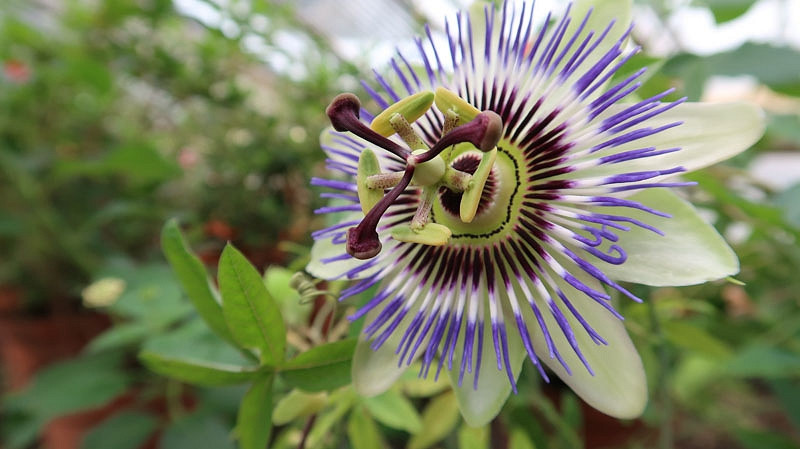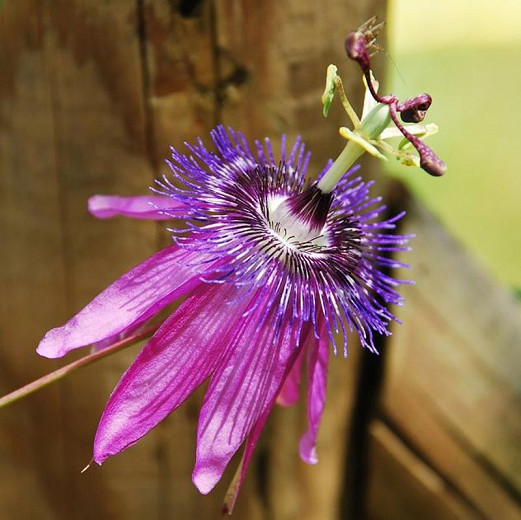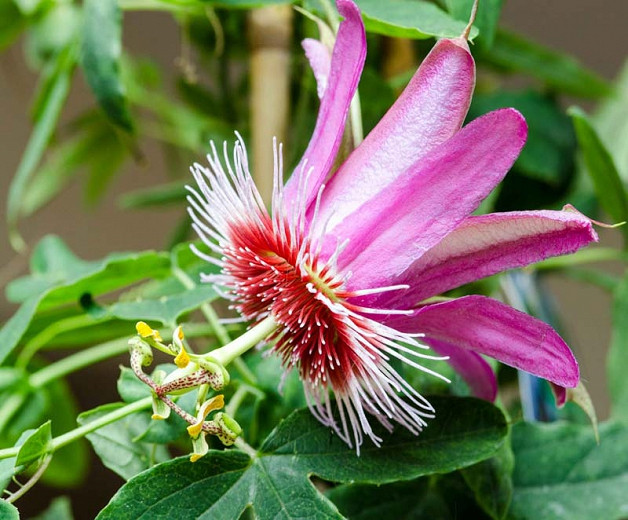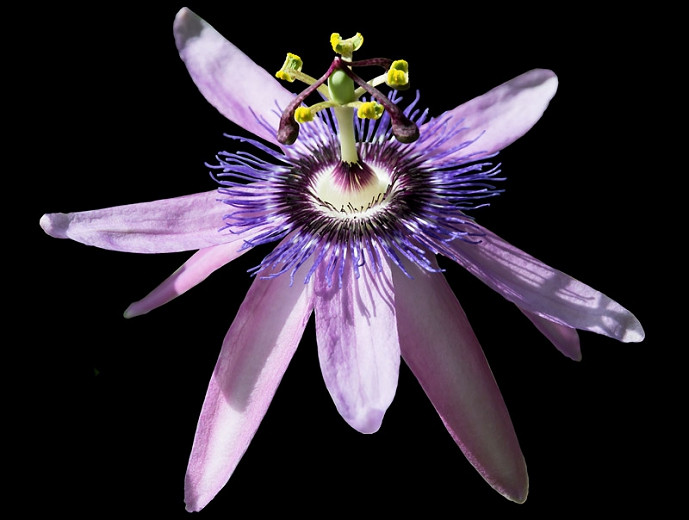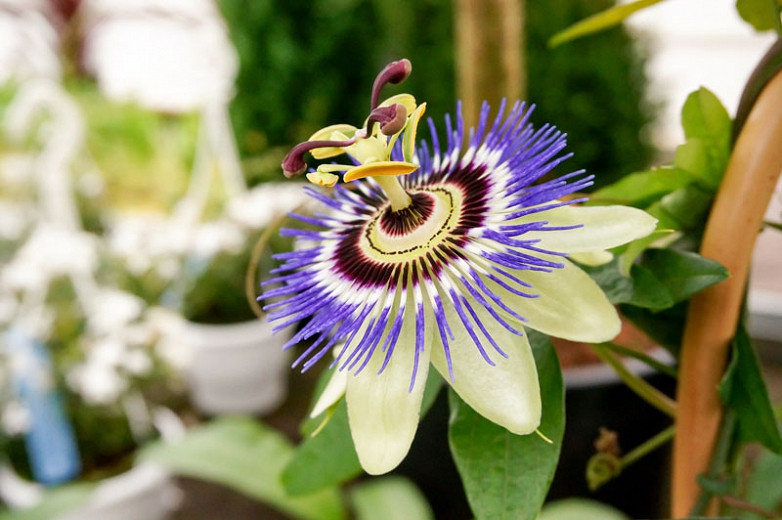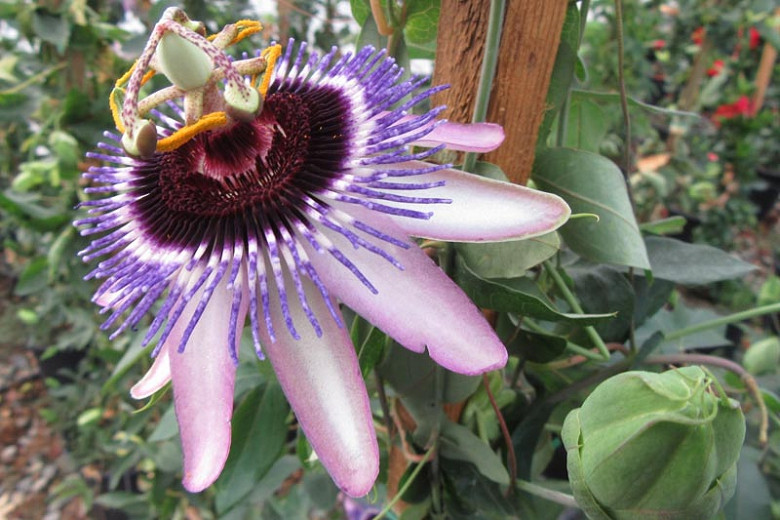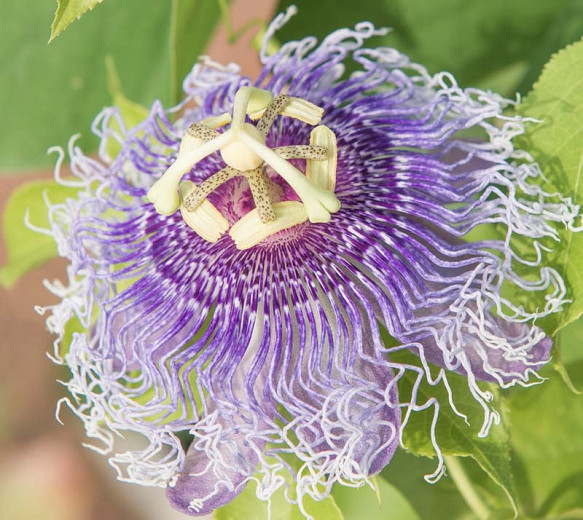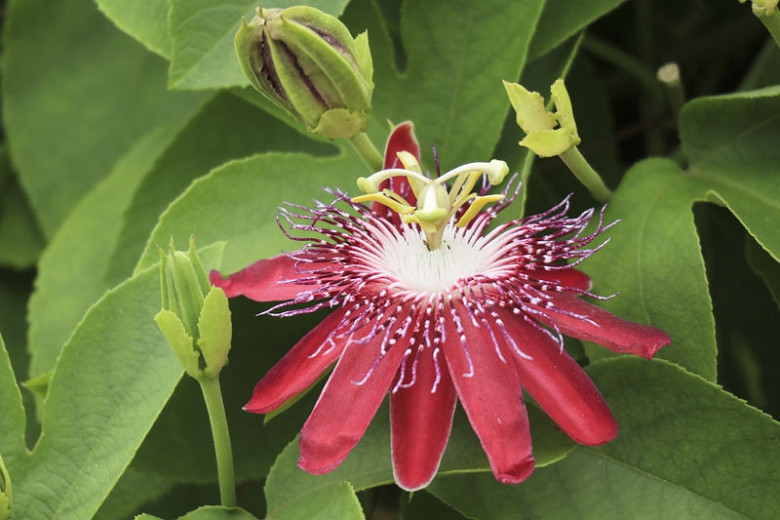Passiflora Party Animal (Passion Flower)
Passiflora ‘Party Animal’ is a vigorous, semi-evergreen climber with twining tendrils and large, beautiful flowers, 4 in. across (10 cm), adorned with white petals and a long skirt of intense purple filaments. They contrast nicely against the foliage of palmately lobed, shiny dark green leaves.
Passiflora 'Party Animal' is a vigorous, semi-evergreen climber with twining tendrils and large, beautiful flowers, 4 in. across (10 cm), adorned with white petals and a long skirt of intense purple filaments. They contrast nicely against the foliage of palmately lobed, shiny dark green leaves. The ravishing blossoms are followed by decorative green oval fruit ripening to yellow orange.
- Blooms profusely through most of the warm months from summer to fall
- Thrives in full sun or part shade, in loose sandy or gravelly, moist, well-drained soils. Good drainage is essential. Go light on fertilizer and water deeply, but infrequently. Passion Flowers should be encouraged to reach deep into the earth for water. This prompts them to develop a powerful root system that will sustain them through droughts and freezes. Do not provide too much manure or compost or this will result in lush vegetative growth and poor flowering. Keep the soil on the dry side in the winter. Some drought tolerance once established.
- Easy to grow, this Passion vine can quickly grow up to 10-20 ft. long (3-6 m). Don't try to train your Passion Flower to be too neat and compact. The branches allowed to hang loose and droop a bit will be the ones most inclined to flower.
- Excellent choice for trellises, walls, fences or arbors. Perfect in wall-side borders, city gardens, cottage gardens, Mediterranean gardens and containers. This trouble free climber clings with tendrils so won't damage brickwork or fences!
- Butterflies are extraordinarily fond of Passion Flowers.
- The terminal buds may be pinched out to encourage branching.
- Propagate by seed, semi-hardwood cuttings or by layering in spring or fall.
- This vine blooms on new growth and should be pruned in late winter or early spring. No regular pruning needed. However trimming may be required to keep them to the space available, removing as much from the longer shoots as necessary.
- Ingestion of some parts may cause severe discomfort
Requirements
| Hardiness | 8 – 11 |
|---|---|
| Heat Zones | 6 – 9 |
| Climate Zones | 5, 6, 7, 8, 9, 10, 11, 12, 13, 14, 15, 16, 17, 18, 19, 20, 21, 22, 23, 24, H1, H2 |
| Plant Type | Climbers |
| Plant Family | Passiflora – Passion Flowers |
| Exposure | Full Sun, Partial Sun |
| Season of Interest | Summer (Early,Mid,Late)Fall |
| Height | 10' – 20' (3m – 6m) |
| Water Needs | Average |
| Maintenance | Low, Average |
| Soil Type | Chalk, Clay, Loam, Sand |
| Soil pH | Acid, Alkaline, Neutral |
| Soil Drainage | Moist but Well-Drained |
| Characteristics | Showy, Semi-Evergreen, Fruit & Berries |
| Tolerance | Deer, Drought |
| Attracts | Butterflies |
| Garden Uses | Arbors, Pergolas, Trellises, Patio and Containers, Wall-Side Borders, Walls and Fences |
| Garden Styles | City and Courtyard, Informal and Cottage, Mediterranean Garden |
